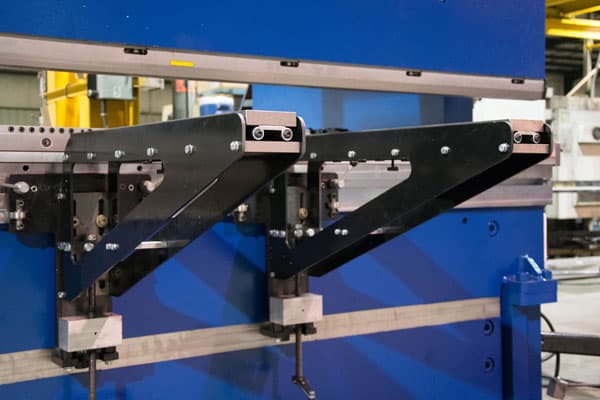Press Brake Types
Single Cylinder Press Brake And Press

Before you can choose your press brake you will need to identify the type and gauge of steel you want to bend.
All of these outstanding machine capabilities are combined with industry-recognized service (we average 2 and 1/2 service technicians for every salesperson), a well-staffed emergency number, and a parts division that will blow you away. If your initial investment involves tooling up your presses brake, we also have that covered. We are Wila and Wilson certified tooling professionals with the tools that you need.


